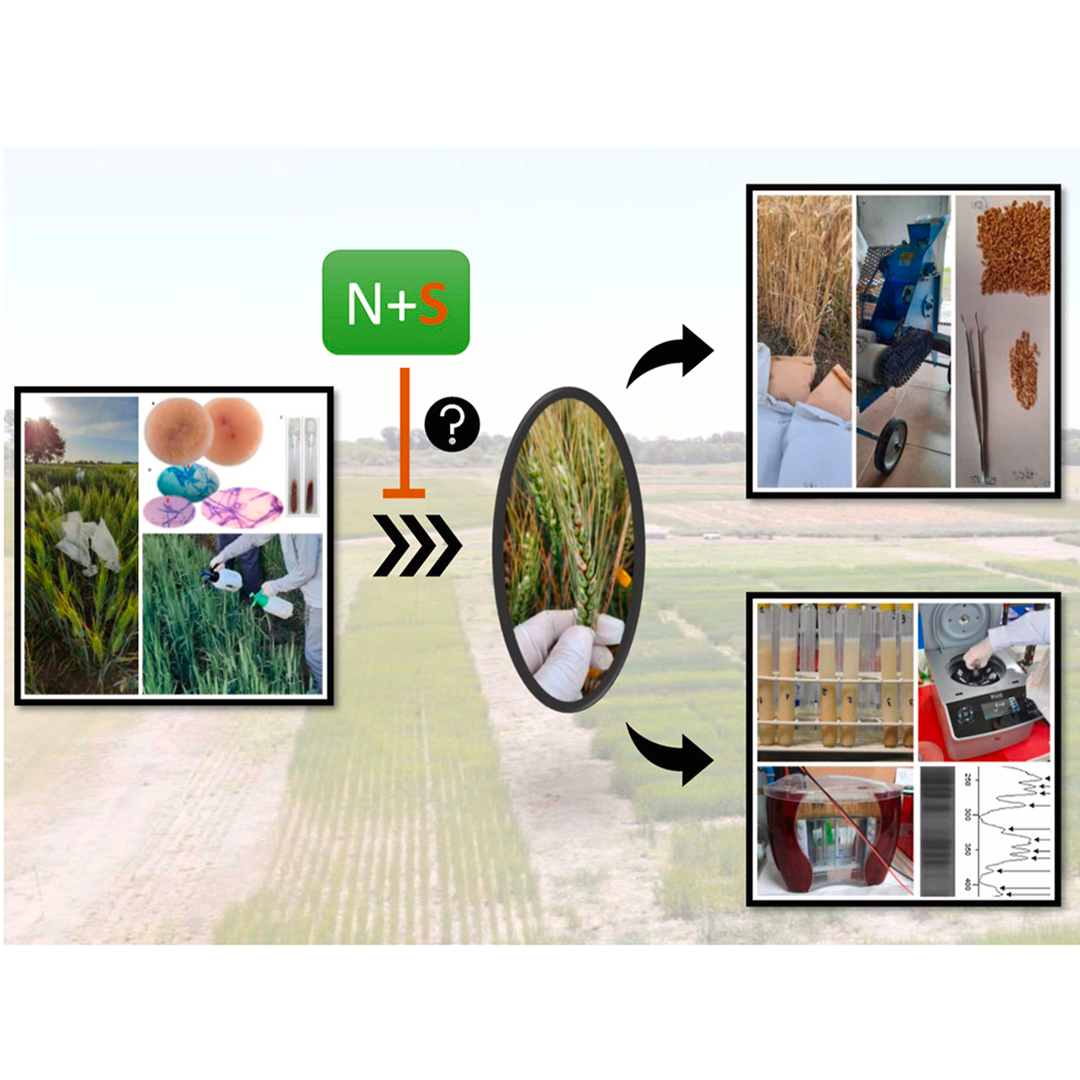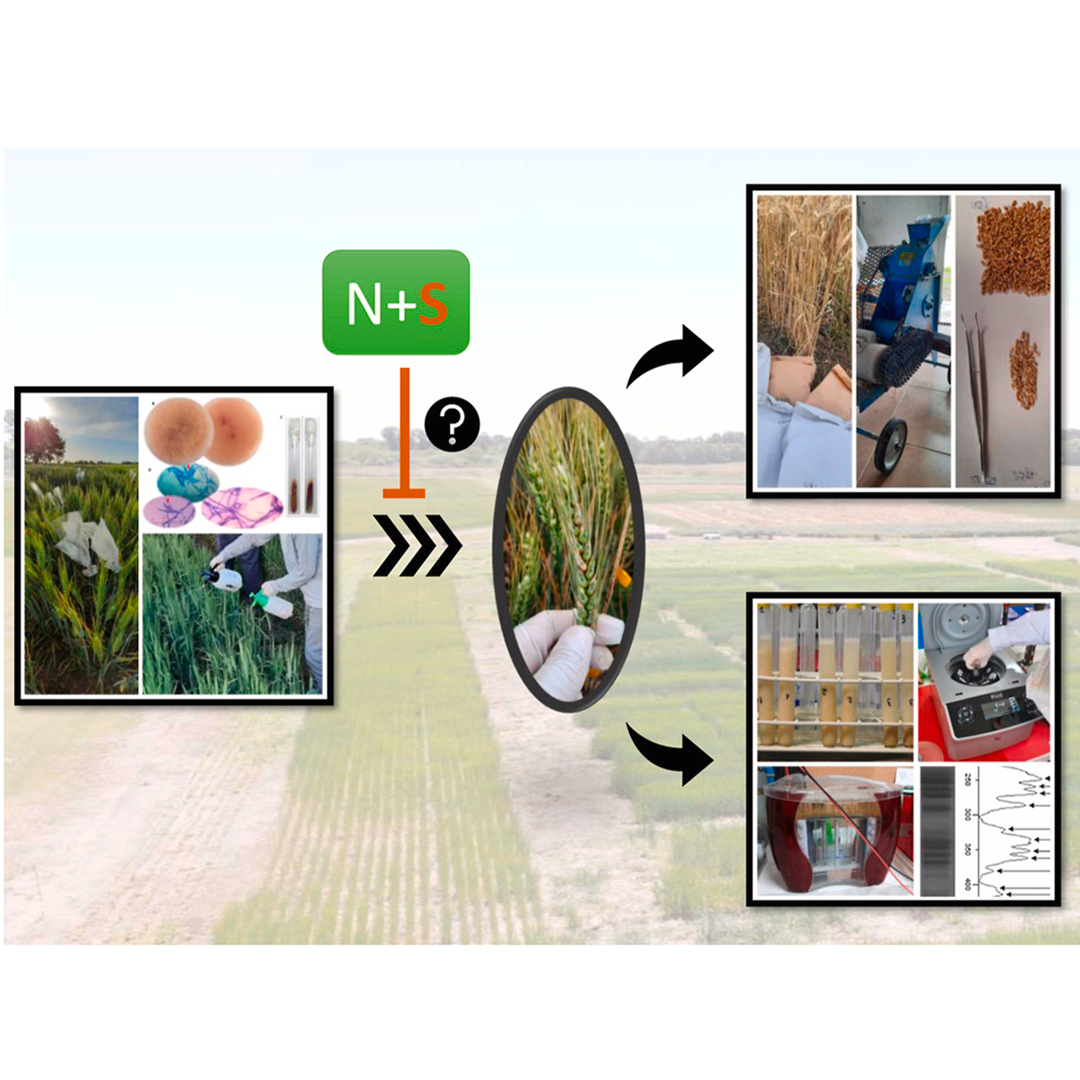Journal of Cereal Science, Volume 123, 2025
Highlights
- S fertilization and FHB interaction on bread wheat gluten composition was assessed.
- Early sulfur crop fertilization reduced FHB parameters at high disease intensity.
- Differential degradation of gluten proteins was observed as grain damage increased.
- HMW subunit encoded by Glu-A1x was more sensible to fungal degradation.
Abstract
Fusarium head blight (FHB) has great destructive potential, with the influence of sulfur crop nutrition on this disease being poorly investigated in bread wheat. This work aimed to analyze the impact of sulfur fertilization on the F. graminearum/bread wheat interaction, relating the grain weight damage to changes in protein composition, and the consequent impact on quality predictive parameters. Two field experiments were conducted, applying treatment combinations of sulfur fertilization and artificial inoculation. Early application of sulfur fertilizer slightly reduced FHB parameters when disease intensity was high, suggesting their possible utility as a partial mitigation strategy. Differential degradation of gluten protein fractions was observed as grain damage increased (i.e., from linear functional relationships to linear-plateau), and S application did not alter these functions. Glutenins were more sensitive to grain damage than gliadins, with a threshold of grain weight loss around 37 %, above which a general alteration of protein composition was triggered. The high molecular weight glutenin subunit encoded by Glu-A1x became relevant due to its sensitivity to fungal degradation. To our knowledge, this work provides novel information about the influence of sulfur crop nutrition on the F. graminearum-wheat pathosystem and could contribute to modeling the alterations in gluten composition and quality.


